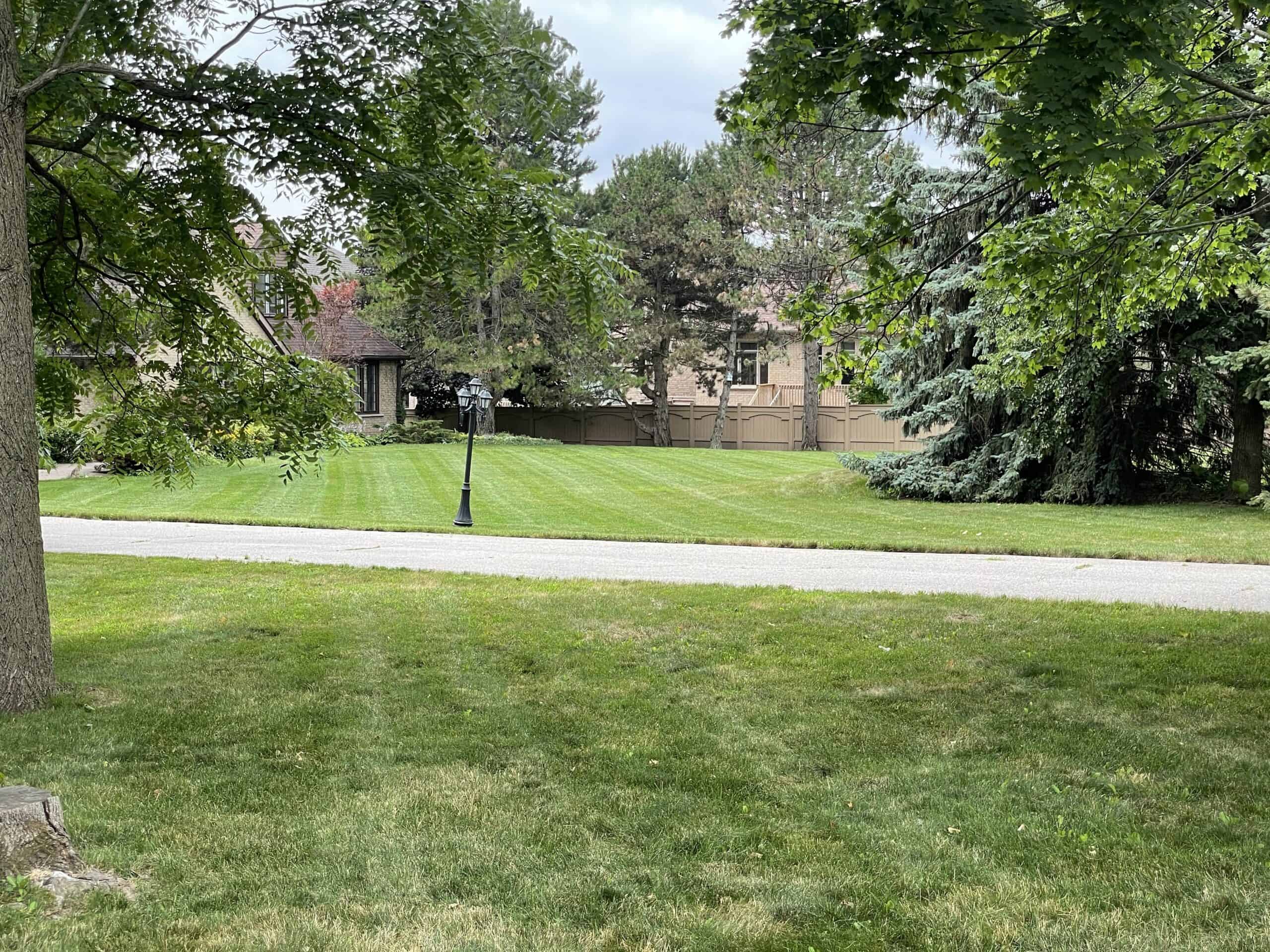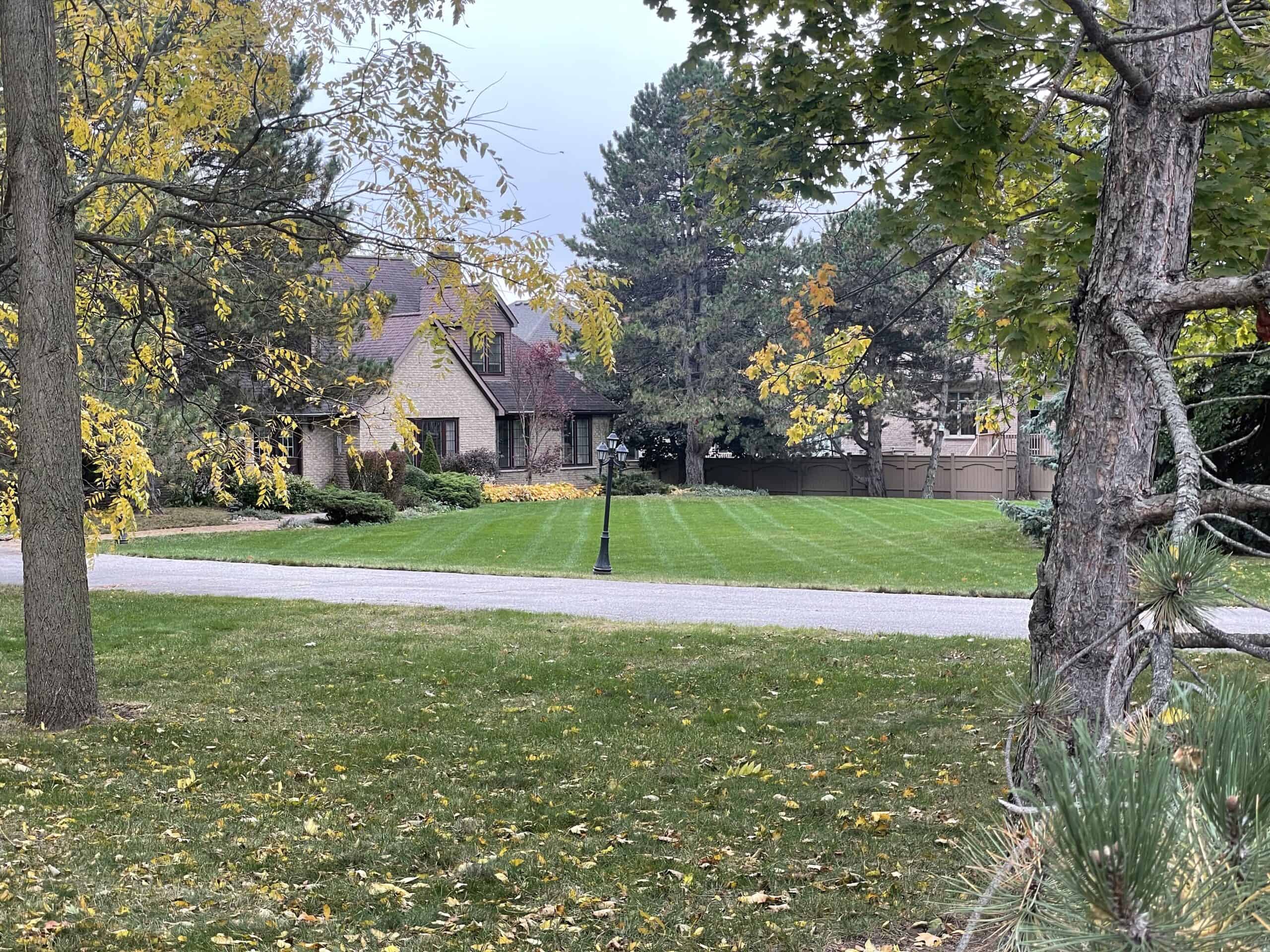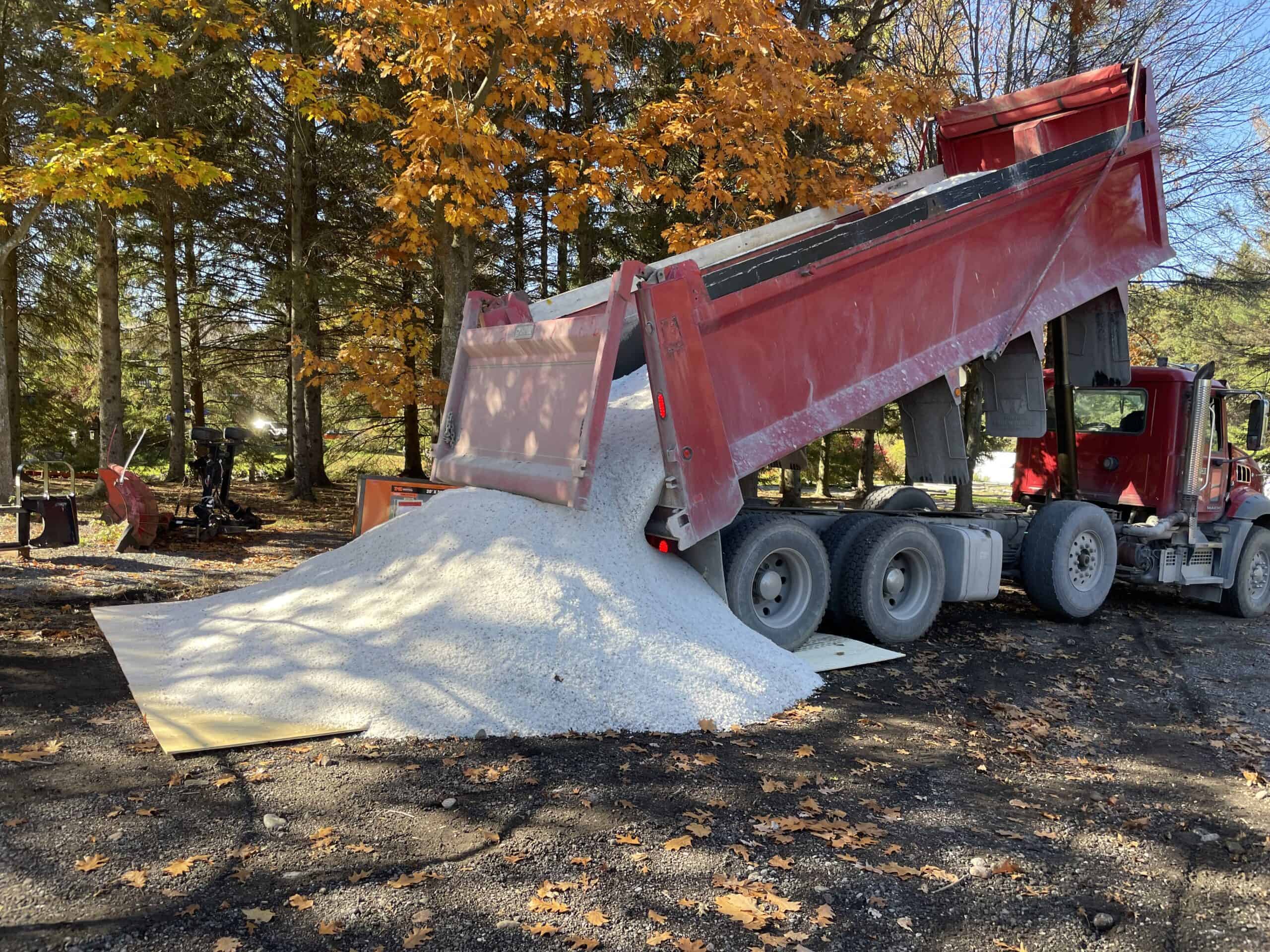Lawn Fertilization: Facts Homeowners Need to Know
Call Now
Lawn fertilization is an essential task for many homeowners and businesses. It helps promote healthy plant growth, reduces the need for invasive weed control, and simplifies flowerbed installation & maintenance. So, what else should you know about fertilization and aeration? This blog will explain.
We’ll discuss three facts about fertilization for lawns and then explore several tips for making the most of your landscaping budget. Let’s get to it.
Uses for Lawn Fertilization
 Homeowners and businesses fertilize their lawns for many reasons. Some need better soil quality or improved garden yields. Others want to enhance grass color and fortify yards against environmental stressors.
Fertilization gradually thickens the healthy foliage while suppressing unwanted weeds and bare spots. It can also replenish vital nutrients such as nitrogen, phosphorus, magnesium, potassium, sulfur, and iron. Maintain your lawn’s lush appearance for longer while enjoying high-quality fruits, vegetables, and landscape designs.
Here are some other lawn fertilization applications:
Homeowners and businesses fertilize their lawns for many reasons. Some need better soil quality or improved garden yields. Others want to enhance grass color and fortify yards against environmental stressors.
Fertilization gradually thickens the healthy foliage while suppressing unwanted weeds and bare spots. It can also replenish vital nutrients such as nitrogen, phosphorus, magnesium, potassium, sulfur, and iron. Maintain your lawn’s lush appearance for longer while enjoying high-quality fruits, vegetables, and landscape designs.
Here are some other lawn fertilization applications:
- Improve root performance
- Decrease pet activity
- Control erosion
- Increase property value
- Build sustainable landscaping
 Nutrient availability plays a significant role in soil health and pH balance. Grass needs an optimal pH range to grow efficiently and prevent dead spots. Homeowners and landscaping companies can apply lime or sulfur to the ground when adjusting the chemical balance.
This necessity can mean additional maintenance steps for property owners. Talk to your team about aftercare expectations and soil testing.
#3. Fertilization Must Be Timed Correctly
Timing is everything in lawn fertilization. Many experts will tell you that active growth seasons are the best time to fertilize your land. This means scheduling professional landscapers in the spring or summer for best results. Then check the progress each year to determine if reapplication is in order.
Avoid fertilization during a drought or throughout winter months. Incorrect timing can cause insufficient nutrient uptake and potentially harm your lawn.
Special Considerations
Remember, adequate lawn fertilization means understanding your property’s unique needs. It also involves using the right fertilizer at the right time under optimal circumstances. Apply nutrients based on seasonal requirements, weather conditions, and soil health. Do not prioritize the budget because there are multiple variables to consider.
Tips for Maximizing Lawn Fertilizer
Nutrient availability plays a significant role in soil health and pH balance. Grass needs an optimal pH range to grow efficiently and prevent dead spots. Homeowners and landscaping companies can apply lime or sulfur to the ground when adjusting the chemical balance.
This necessity can mean additional maintenance steps for property owners. Talk to your team about aftercare expectations and soil testing.
#3. Fertilization Must Be Timed Correctly
Timing is everything in lawn fertilization. Many experts will tell you that active growth seasons are the best time to fertilize your land. This means scheduling professional landscapers in the spring or summer for best results. Then check the progress each year to determine if reapplication is in order.
Avoid fertilization during a drought or throughout winter months. Incorrect timing can cause insufficient nutrient uptake and potentially harm your lawn.
Special Considerations
Remember, adequate lawn fertilization means understanding your property’s unique needs. It also involves using the right fertilizer at the right time under optimal circumstances. Apply nutrients based on seasonal requirements, weather conditions, and soil health. Do not prioritize the budget because there are multiple variables to consider.
Tips for Maximizing Lawn Fertilizer
 Thriving lawns require maintenance and attention. You must manage weed control, mulching, and mowing to enjoy the fruits of fertilization. Then ensure your team and loved ones follow these simple instructions to maximize the benefits:
Thriving lawns require maintenance and attention. You must manage weed control, mulching, and mowing to enjoy the fruits of fertilization. Then ensure your team and loved ones follow these simple instructions to maximize the benefits:
- Follow the recommended fertilizer application rates.
- Check for even product distribution.
- Apply water immediately after each application.
- Use caution when applying fertilizer near walkways, driveways, and porous surfaces.
- Maintain an appropriate blade height when mowing.
- Periodically aerate your lawn to remove soil compaction and boost nutrient uptake.

Aaron grew up in Bowmanville, working along side his dad for as long as he can remember. Aaron went to school to get his small engine repairs certificate to help keep all the machines running well. Aaron is very knowledgeable with all lawn care needs. He took and passed the pesticide license course so he could better help his customers. Aaron always makes sure to determine what your lawn needs and can give recommendations on how to make it better.
Mr. Trim has many awards from, three best rated, This Week Readers Choice, Durham Region Readers Choice and more. Both owners Lisa & Aaron have their pesticide licences. Their biggest accomplishment of all is having loyal customers that trust them year after year for all their lawn, garden and snow clearing needs.
